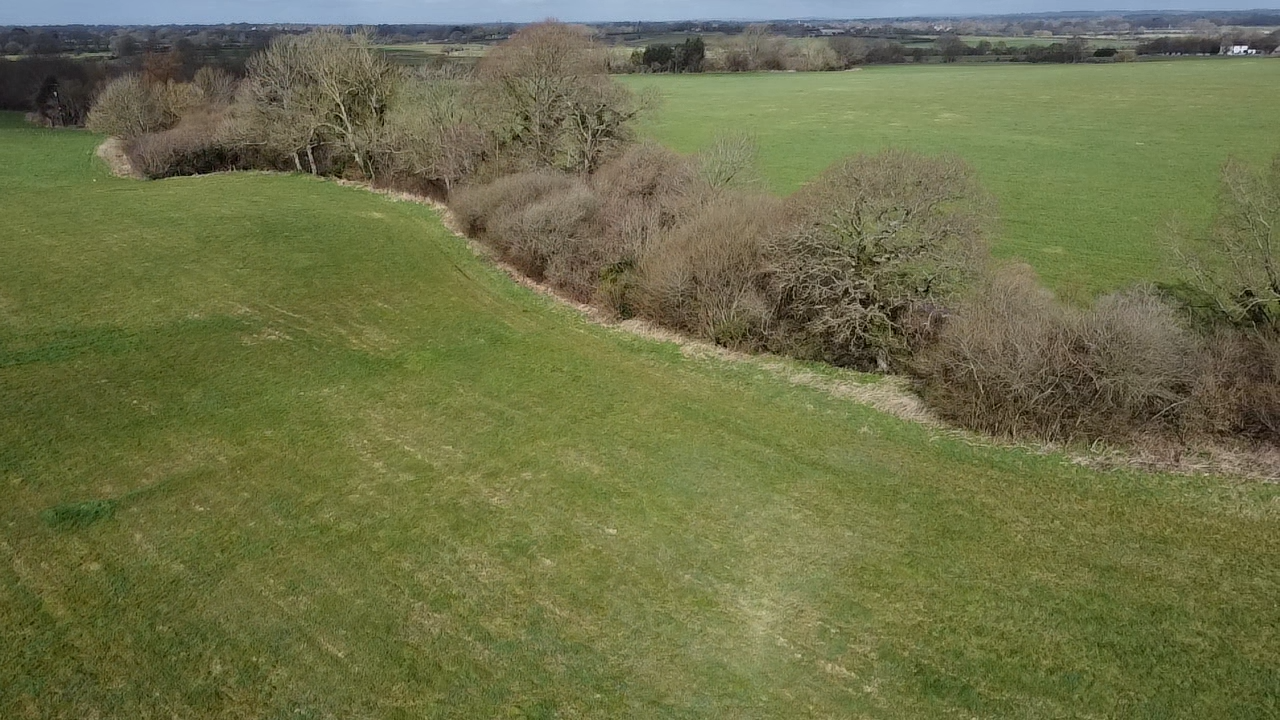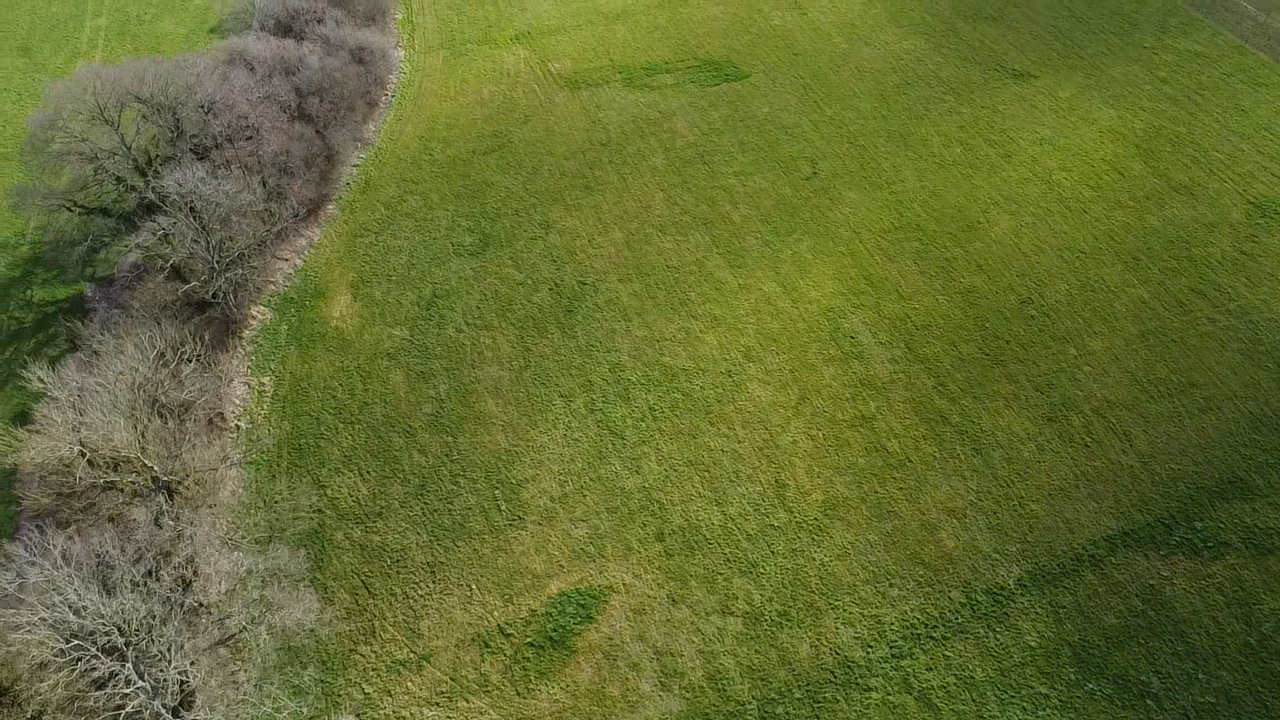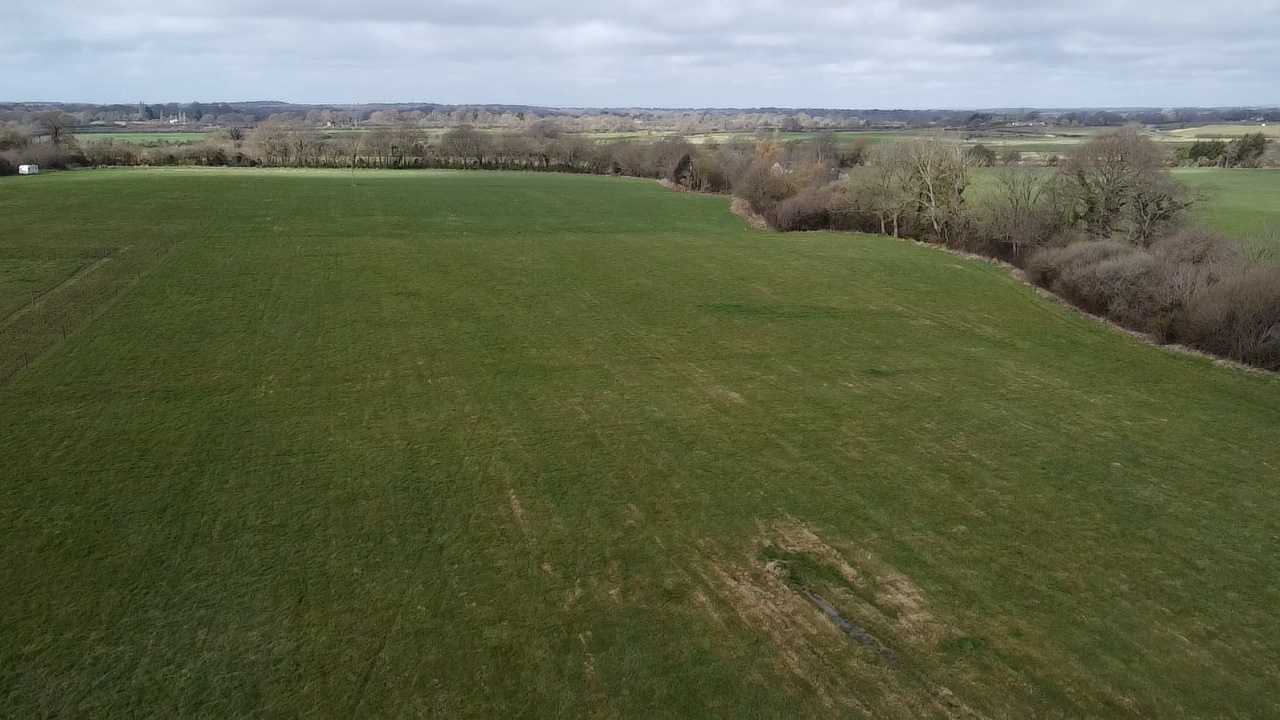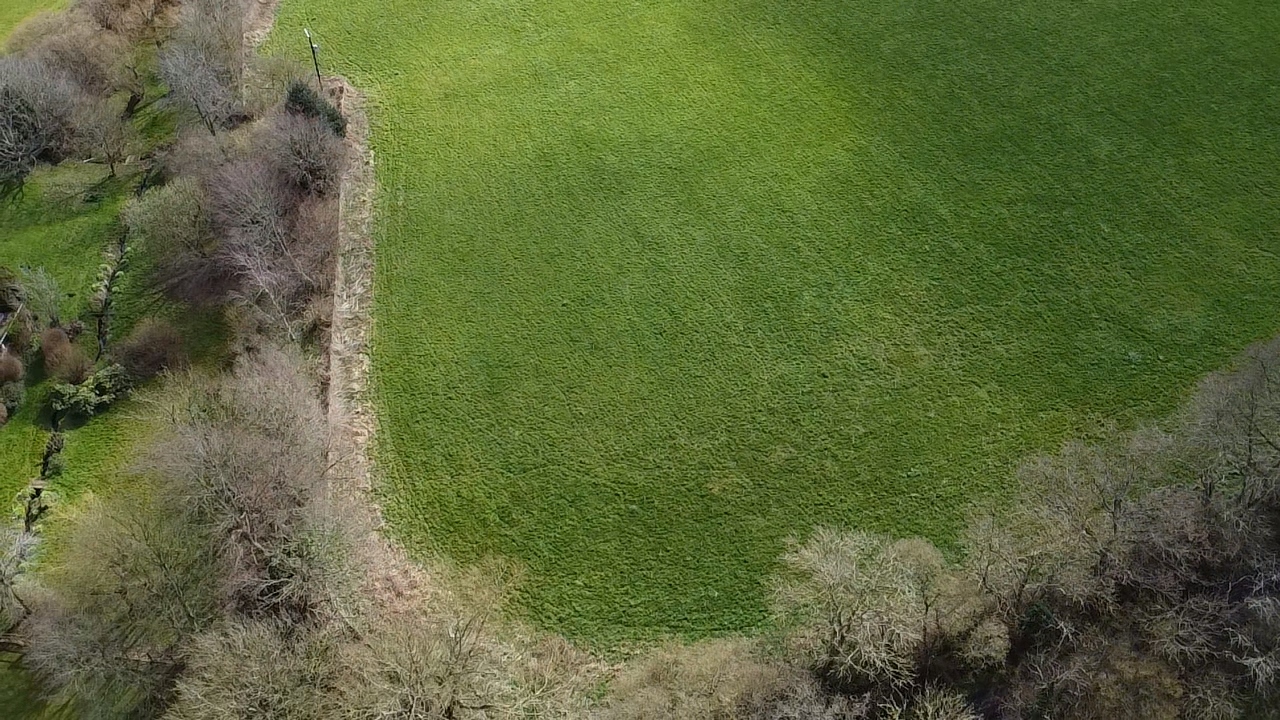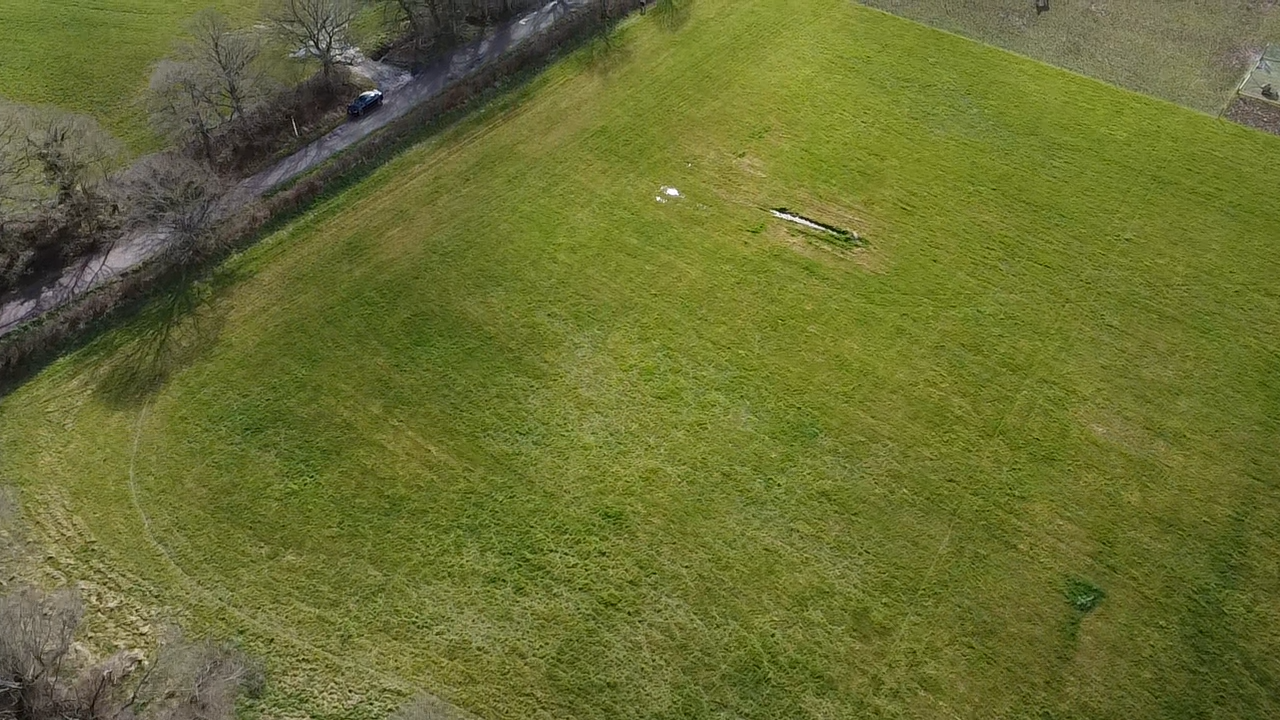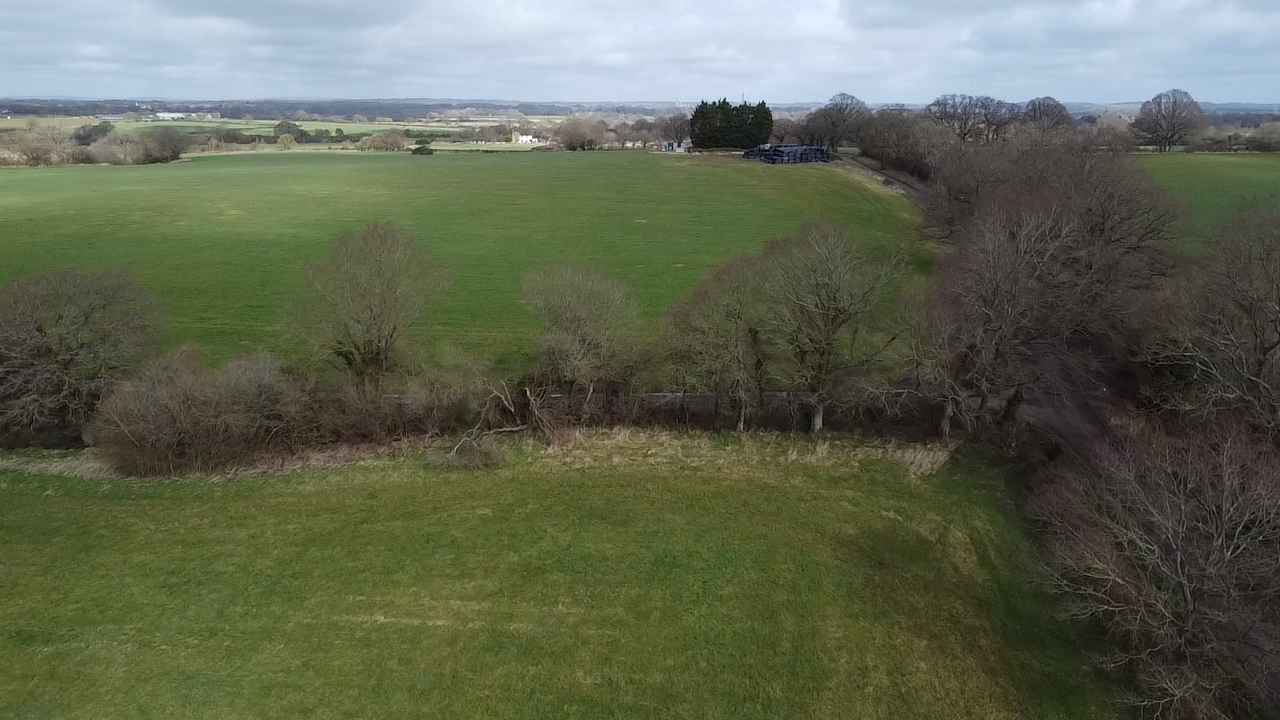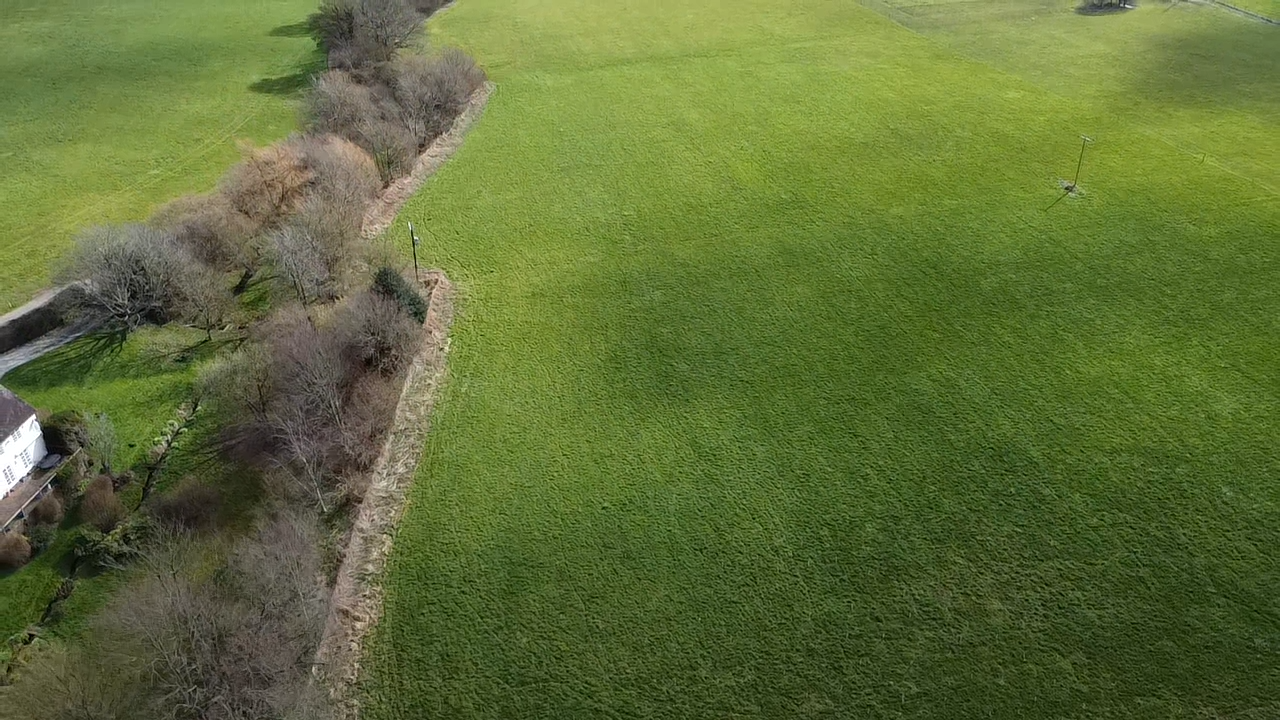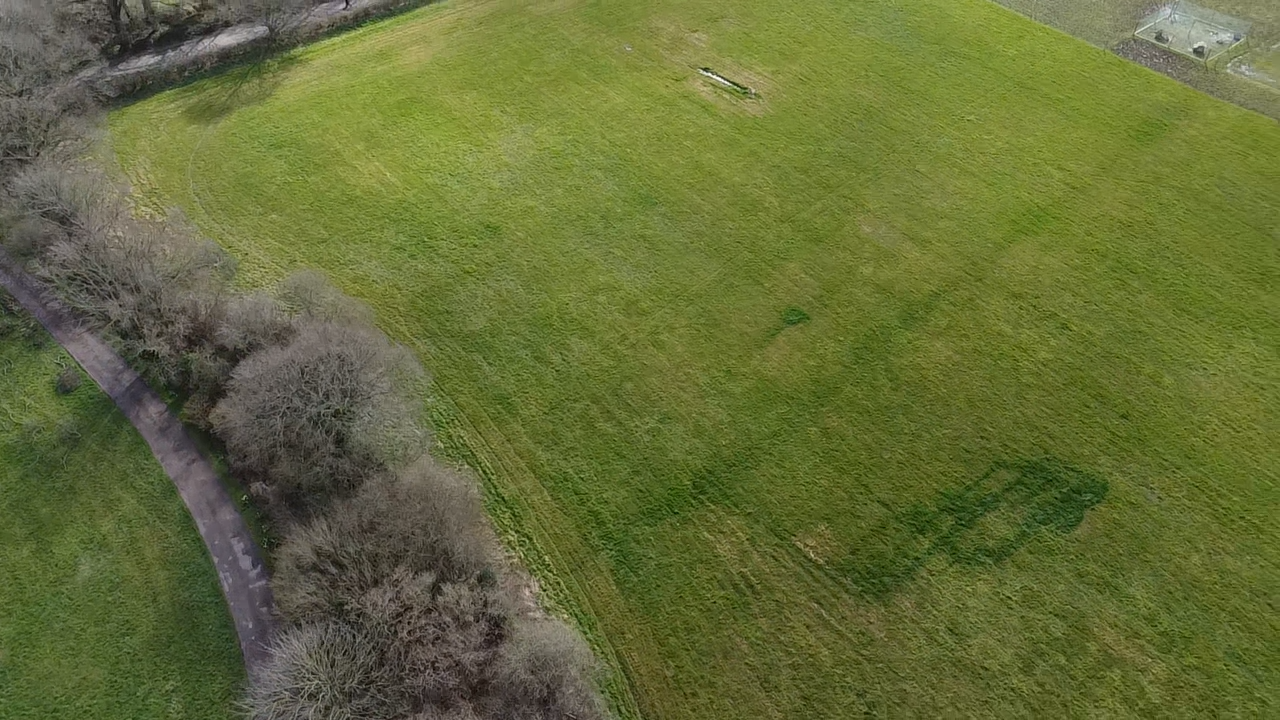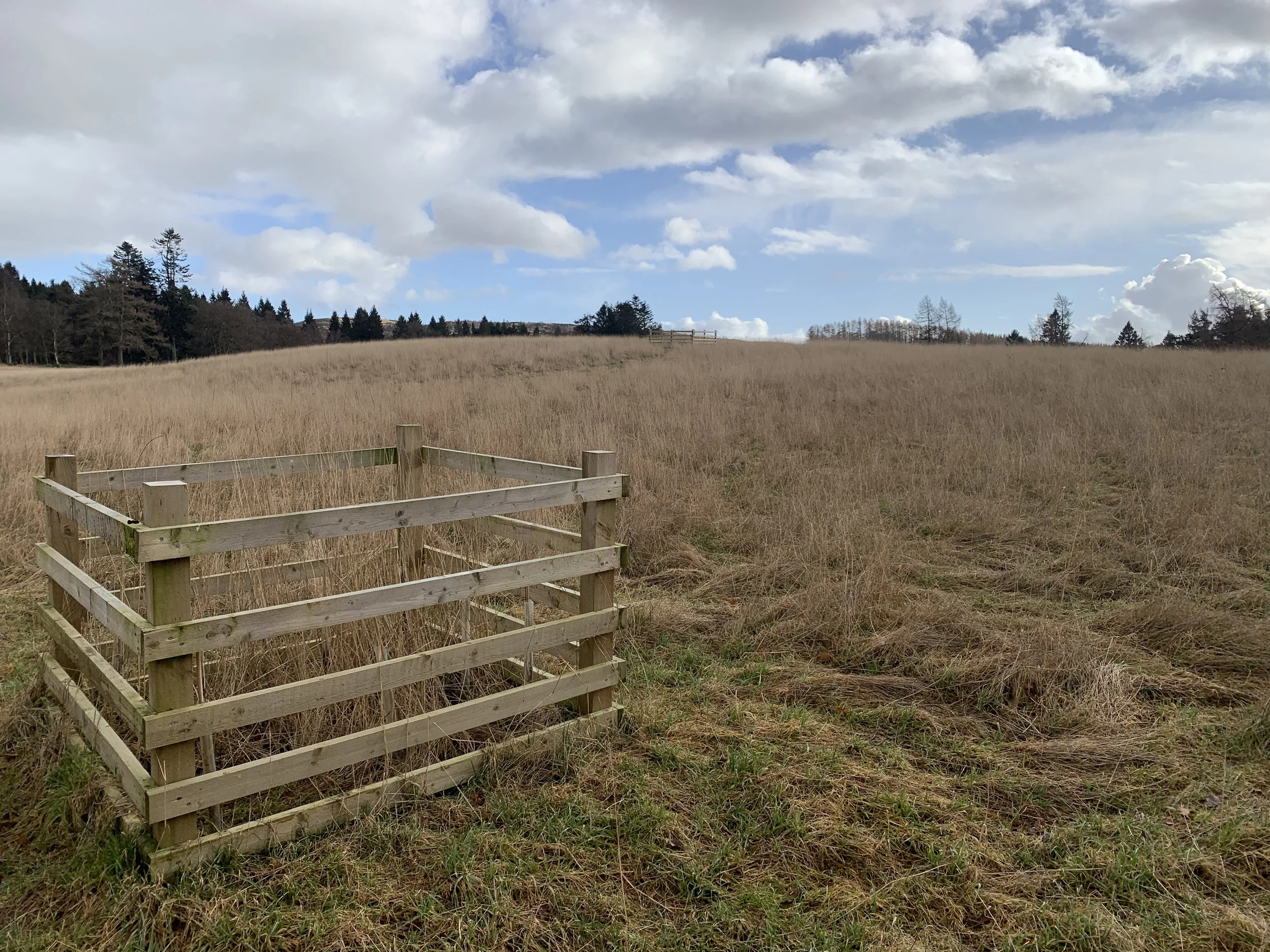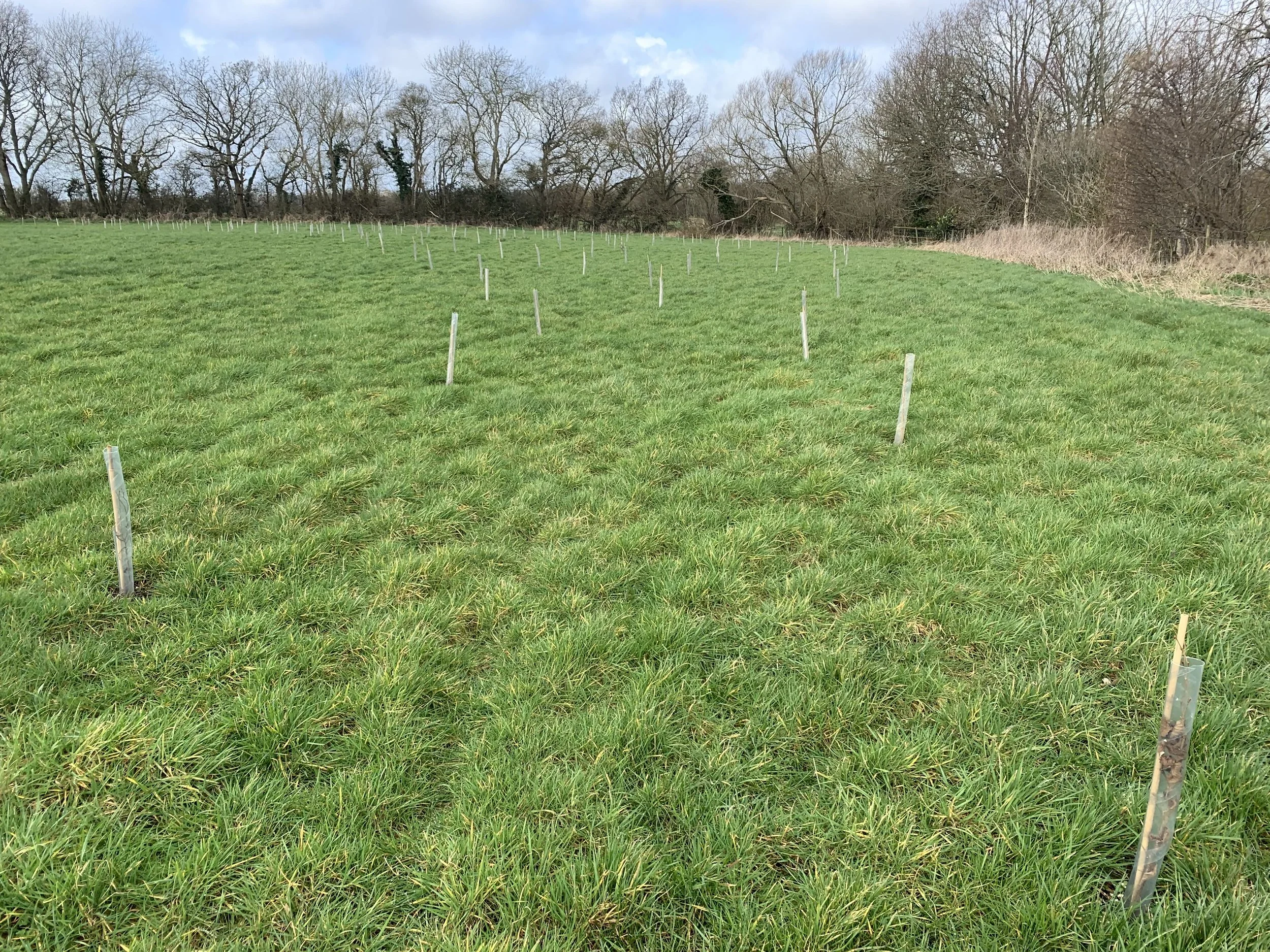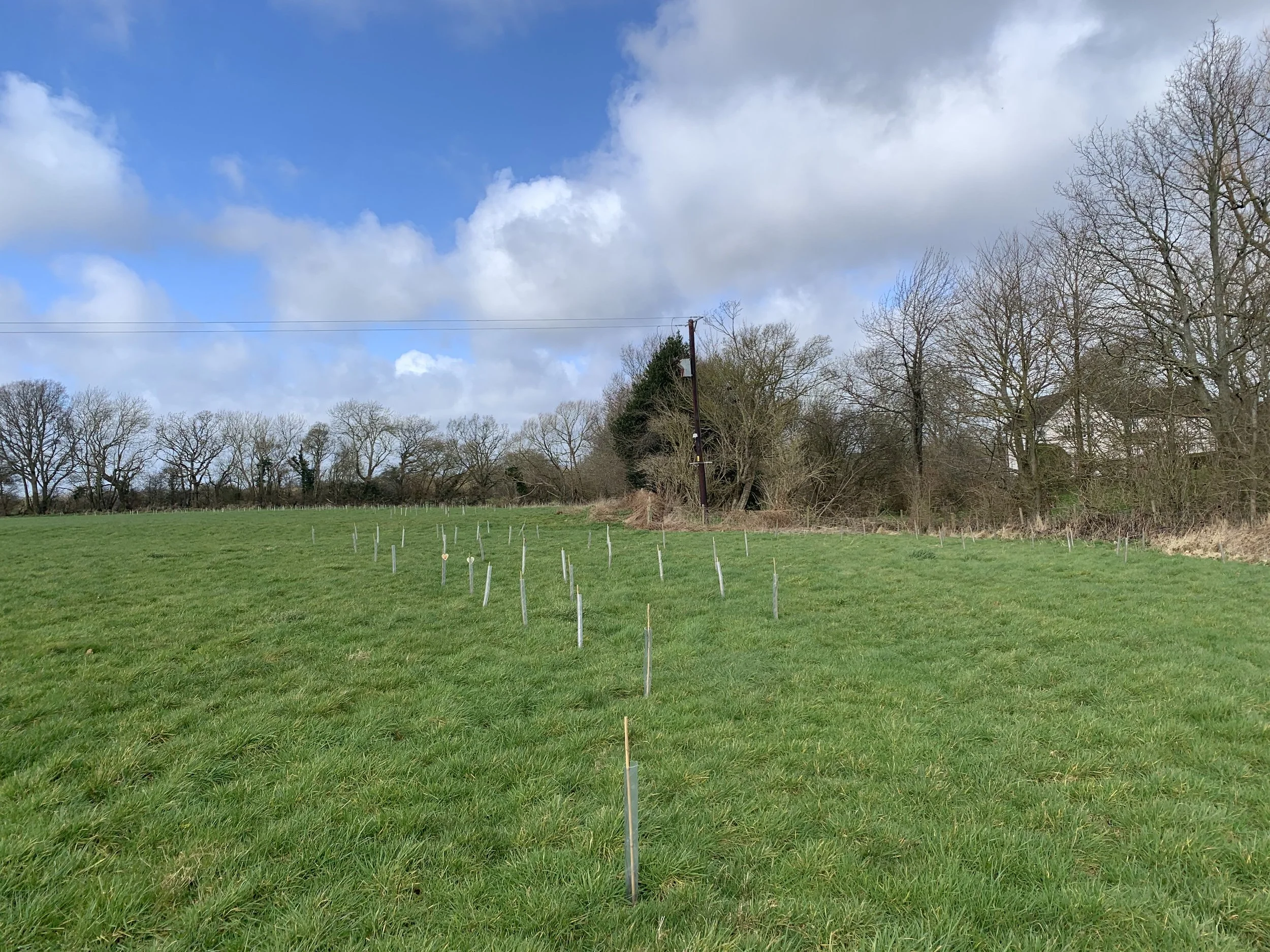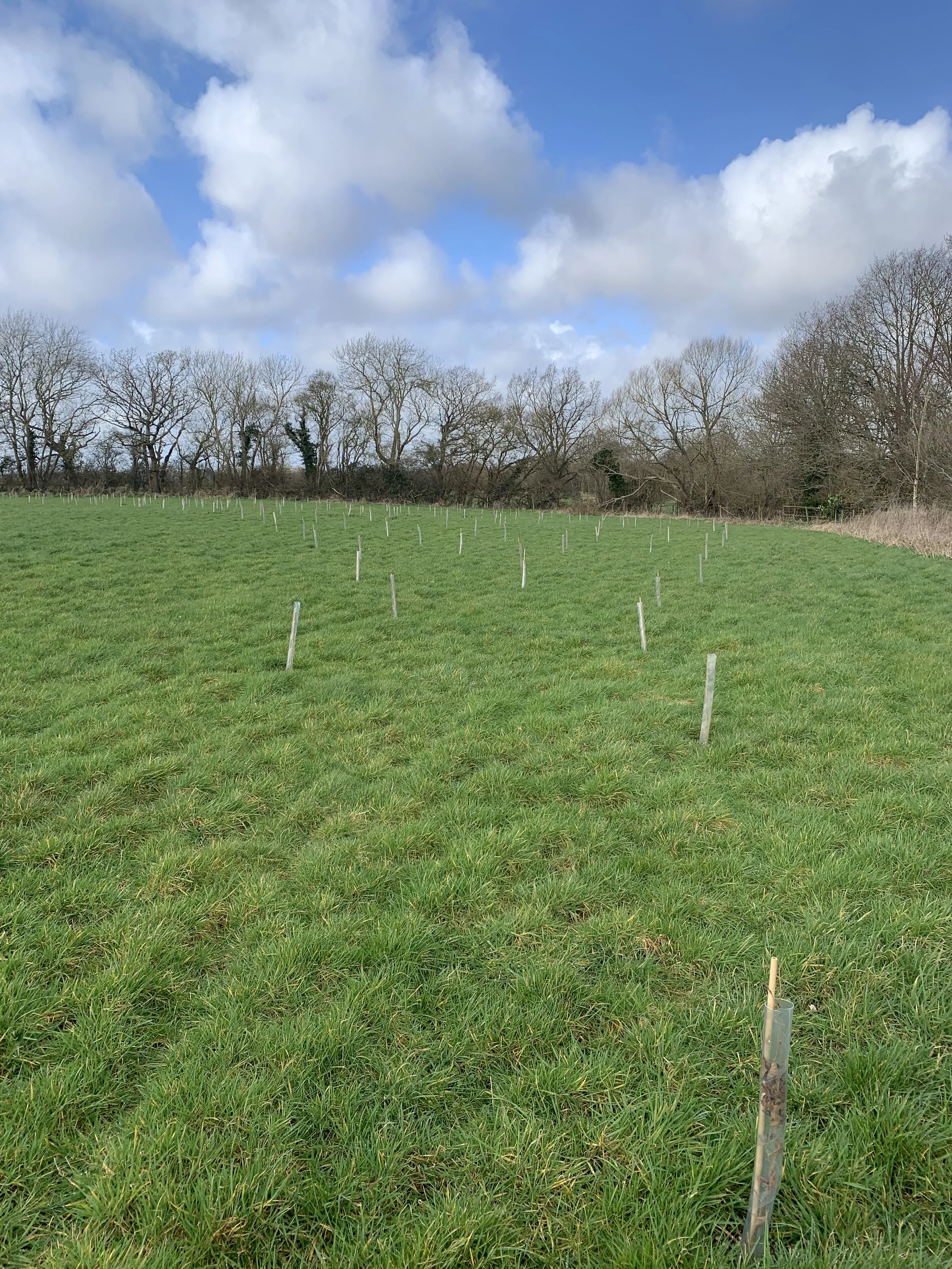Betley (Field of Dreams), Sussex
Rewilding Project
A few hundred metres from the famous River Adur lies the Field of Dreams in Betley, Sussex. This 7.5 hectare project is being transformed into a wild haven for the community.
The field was previously used for silage production, predominately ryegrass. However, the land is now being restored to support a number of ecosystems, including wildflower meadows, native woodland and wetlands feeding from a contributory of the Adur to the north of the site.
The project is a forerunner in the rewilding for mental health space, exploring the mostly untested therapeutic benefits that wild land can have for individuals and communities.
With such a variety of natural elements, Betley has the potential to restore and sustain a number of different wild ecosystems.
-
Approximately 250 native tree saplings were planted in November 2021 along the northern corridor of the land. This will encourage an already established woodland along the land’s boundary to spread into the field.
-
Approximately 3.5 hectares will be reseeded with a damp soil wildflower meadow mix, with the aim of attracting a range of insects to the land. This will boost pollination and in turn biodiversity in the area.
-
The field slopes from south the north, towards the stream that feeds the Adur at the site’s boundary. There is therefore a natural flow of surface and ground water downslope, which gives the potential for scrapes to be created that pool water in wetland ponds. This will introduce an entirely new ecosystem to the land which can support even more wildlife.
AREA BREAKDOWN
ESTIMATED CARBON SEQUESTRATION
FUNDRAISING
Tree saplings and protective fencing - £TBC
As Bamff is soon going to opened up to wild animals, it’s important to install small pockets of tree saplings which are protected by fencing from the browsing herbivores. This means that animal reintroductions and biomass growth (and therefore carbon capture) can happen in parallel.

